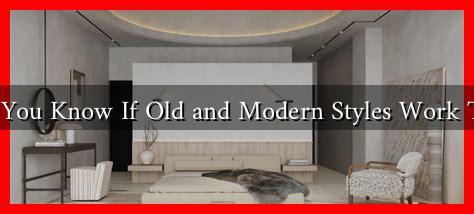-
Table of Contents
How Do You Know If Old and Modern Styles Work Together?
In the world of design, the fusion of old and modern styles can create a unique aesthetic that resonates with both nostalgia and contemporary flair. However, blending these styles requires a keen eye and a thoughtful approach. This article explores how to determine if old and modern styles can harmoniously coexist in your space, providing insights, examples, and practical tips.
Understanding the Essence of Style
Before diving into the integration of old and modern styles, it’s essential to understand what each style represents:
- Old Styles: These often include traditional, vintage, or antique elements that evoke a sense of history and craftsmanship. They can range from Victorian and Art Deco to Mid-Century Modern.
- Modern Styles: Characterized by minimalism, clean lines, and a focus on functionality, modern design often incorporates new materials and technologies, emphasizing simplicity and open spaces.
Key Principles for Blending Styles
To successfully merge old and modern styles, consider the following principles:
- Color Palette: Choose a cohesive color scheme that can bridge the gap between old and modern elements. Neutral tones often work well, allowing for pops of color that can tie different styles together.
- Balance: Strive for a balance between the two styles. Too much of one can overpower the other. For instance, if you have a vintage sofa, pair it with modern art or a contemporary coffee table to create visual interest.
- Texture: Mixing textures can enhance the overall aesthetic. Consider combining sleek, modern materials like glass or metal with the warmth of wood or fabric from older pieces.
- Scale: Pay attention to the scale of your furniture and decor. A large, ornate antique piece can be complemented by smaller, modern accessories to maintain harmony in the space.
Examples of Successful Blends
Many designers and homeowners have successfully integrated old and modern styles. Here are a few notable examples:
- Mid-Century Modern Meets Vintage: A living room featuring a classic Eames chair alongside a vintage Persian rug creates a striking contrast that feels both inviting and stylish.
- Industrial and Rustic: An industrial-style loft with exposed brick walls can be softened with rustic wooden furniture, creating a warm yet contemporary atmosphere.
- Modern Minimalism with Antique Accents: A minimalist kitchen with sleek cabinetry can be enhanced by incorporating antique light fixtures or a vintage dining table, adding character without overwhelming the space.
Case Studies: Real-Life Applications
Several case studies illustrate the successful integration of old and modern styles:
- The High Line Hotel, New York: This hotel beautifully combines Gothic architecture with modern furnishings, creating a unique ambiance that attracts both tourists and locals.
- Restoration Hardware’s Gallery: Their showrooms often feature a mix of vintage and contemporary pieces, demonstrating how old-world charm can coexist with modern design.
Statistics on Design Trends
According to a survey by the American Society of Interior Designers (ASID), 60% of designers reported an increase in demand for eclectic styles that blend old and new elements. This trend reflects a growing appreciation for personalized spaces that tell a story.
Conclusion: Finding Your Unique Style
Determining whether old and modern styles work together ultimately comes down to personal preference and the specific context of your space. By understanding the essence of each style, applying key principles of design, and drawing inspiration from successful examples, you can create a harmonious environment that reflects your unique taste. Remember, the goal is to create a cohesive look that feels intentional rather than haphazard. Embrace the challenge of blending styles, and you may discover a beautiful balance that enhances your living space.
For more insights on interior design trends, visit ASID.

